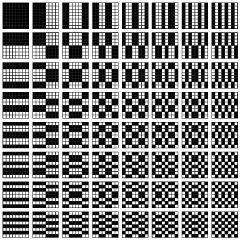 It is very rare for a company to develop a new standard and establish it as part of creating differentiation. Usually companies piggy-back their wares on existing standards and attempt to implement them better than the competition in some way. There were exceptions with big companies. When AT&T was a big monopoly it could simply decide what the standard would be for, say, the modems of the day or the plug you phone would use. IBM, when it was an effective monopoly in the mainframe world, could simply decide how magnetic tapes would be written. I suppose Microsoft can just decide what .NET is and millions of enterprise programmers jump.
It is very rare for a company to develop a new standard and establish it as part of creating differentiation. Usually companies piggy-back their wares on existing standards and attempt to implement them better than the competition in some way. There were exceptions with big companies. When AT&T was a big monopoly it could simply decide what the standard would be for, say, the modems of the day or the plug you phone would use. IBM, when it was an effective monopoly in the mainframe world, could simply decide how magnetic tapes would be written. I suppose Microsoft can just decide what .NET is and millions of enterprise programmers jump.
Qualcomm, however, created the basic idea of CDMA, made it workable, owned all the patents, and went from being a company nobody had heard of to being the largest fabless semiconductor company and have even broken into the list of the top 10 largest semiconductor companies.
The firs time I ran across CDMA it seemed unworkable. CDMA stands for code-division multiple access, and the basic technique relies on mathematical oddities called Walsh functions. These are functions that everywhere take either the value 0 or 1 and are essentially pseudo-random codes. But they are very carefully constructed pseudo-random codes. If you encode a data stream (voice) with one Walsh function and process it with another at the receiver you get essentially zero. If you process it with the same Walsh function you recover the original data. This allows everyone to transmit at once using the same frequencies, and only the data stream you are trying to listen to gets through. It is sometimes explained as being like at a nosiy party, and being able to pick out a particular voice by tuning your ear into it.
Years ago I had done some graduate work in mathematics, so I’d actually come across Walsh functions and so the idea of CDMA was very elegant. However, my experience of very elegant ideas is that they get really messy when they meet real-world issues. Force-directed placement, for example, seems an elegant concept but it gets messier once your library cells are not points and once you have to take into account other constraints that aren’t easily represented as springs. So I felt CDMA would turn out to be unworkable in practice. CDMA has its share of complications to the basic elegant underpinning: needing to adjust the transmit power every few milliseconds, needing to cope with multiple reflected, so time-shifted, signals and so on.
At the highest level what is going on is that GSM (and other TDMA/FDMA standards) could get by with very simple software processing since they put a lot of complexity in the air (radio) interface and didn’t make optimal use of bandwidth. CDMA has a very simple radio interface (ignore everyone else) but requires a lot of processing at the receiver to make it work. But Moore’s law means that by the time CDMA was introduced, 100 MIPS digital signal processors were a reality and so it was the way of the future.
Of course, my guess that CDMA was too elegant to be workable was completely wrong. Current and future standards for wireless are largely based on wide-band CDMA, using a lot of computation at the transmitter and, especially, receiver to make sure that bandwidth is used as close to the theoretical maximum as possible.
But before CDMA turned out to be a big success Qualcomm was struggling. In about 1995 VLSI tried to license CDMA to be able to build CDMA chips as well as the GSM chips that they already built. Qualcomm had “unreasonable” terms and were hated in the industry since they charged license fees to people who licensed their software, people who built phones (even if all the CDMA was in chips purchased from Qualcomm themselves) and people who built chips (even if they only sold them to people who already had a Qualcomm phone license). They were hated by everyone. Now that’s differentiation. The royalty rates were too high for us and we ended up walking from the deal.
I was in Israel 2 days from the end of a quarter when I got a call from Qualcomm. They wanted to do a deal. But only if all royalties were non-refundably pre-paid up front in a way they could recognize that quarter. Sounds like an EDA license deal! We managed to do a deal on very favorable terms (I stayed up all night two nights in a row, after a full day’s work, since I was 10 hours different from San Diego, finally falling asleep before we took off from Tel Aviv and having to be awakened after we’d landed in Frankfurt). The license was only about $2M or so in total I think, but that was the relatively tiny amount Qualcomm needed to avoid having a quarterly loss and impacting their stock price and so their ability to raise the funds that they would need to make CDMA a reality. Which they proceeded to do.
